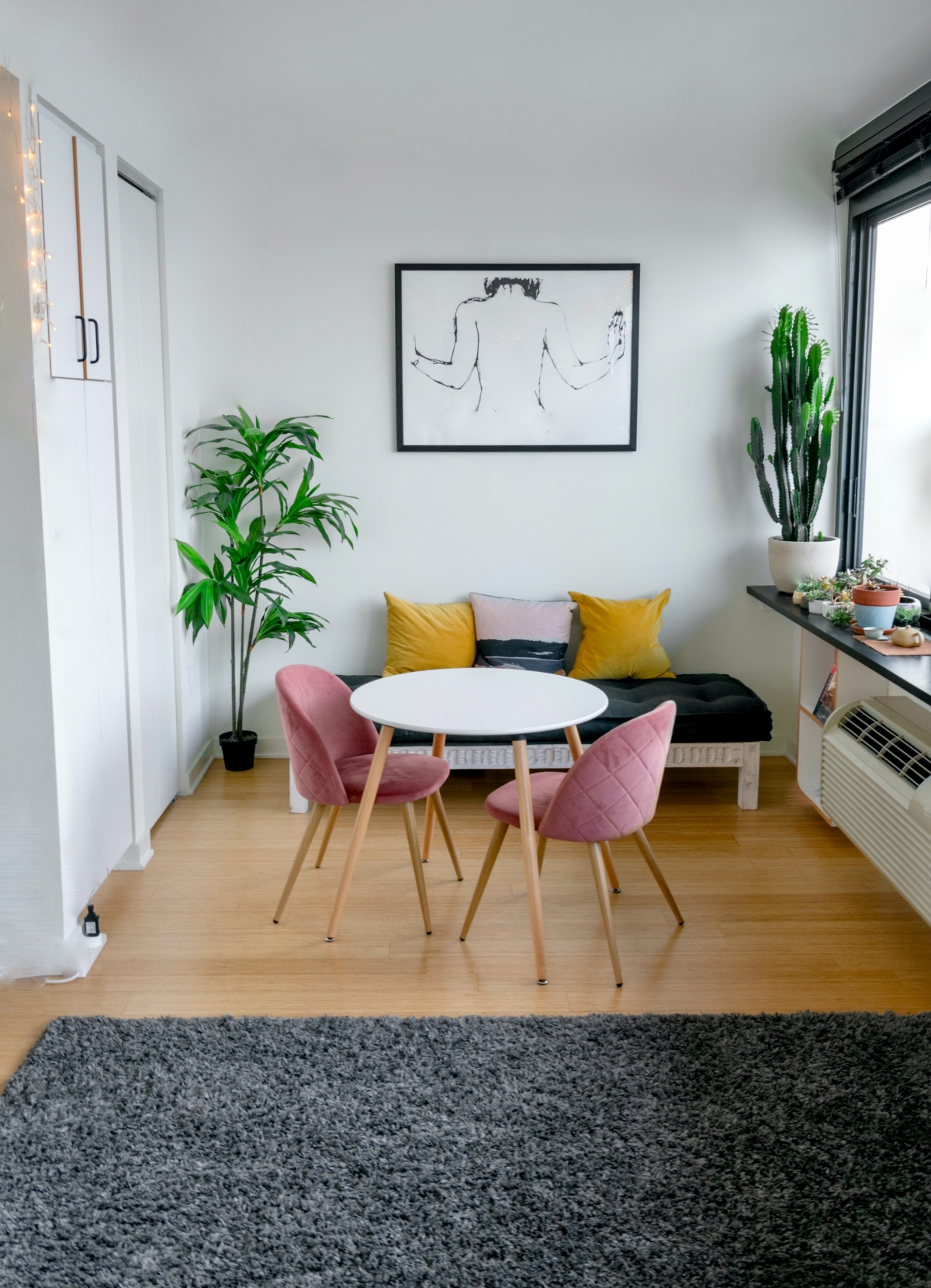Don’t Sign That Lease! An Insider’s Guide to Spotting a Bad Rental Apartment
I’ve seen it a hundred times. Someone falls in love with the great morning light in a living room or the shiny new countertops in a kitchen. They’re so excited they rush to sign the lease. And then, a month later, the regret hits. The water pressure is a sad trickle, the upstairs neighbor sounds like they’re running a bowling alley, and the first winter heating bill is an absolute shocker.
In this article
Look, my day job is managing properties, but I honestly feel a responsibility to the people who live in them. A great rental experience starts with a great match. So I’m going to give you the same advice I give my own family. This is how the pros vet a property, looking past the fresh paint to see what an apartment is really like. It’s the key to finding a place you can actually call home, comfortably and safely.

First, Do Your Homework (Before You Even Leave the House)
The smartest apartment search begins on your couch, not at an open house. Getting organized ahead of time saves you from headaches and bad decisions later. Trust me, landlords and leasing agents can spot an organized applicant a mile away, and it makes you a much more attractive candidate, especially when things are competitive.
Figure Out Your REAL Budget
You’ve probably heard the old “30% rule,” suggesting your rent shouldn’t be more than 30% of your gross income. It’s a decent starting point, but honestly, it’s way too simple. I’ve seen people with big car payments or student loans struggle to make ends meet even when they followed that rule. You need a budget that reflects your actual life.
First, list your total monthly take-home pay. Then, list every single fixed expense: car payments, insurance, phone bill, subscriptions, loan payments, everything. Be brutally honest. What’s left is what you truly have for housing, utilities, groceries, and fun.

But wait, there’s more! Don’t forget the hidden costs of housing:
- Utilities: Never, ever assume. Ask the leasing agent for the average monthly cost of gas, electric, and water for that specific unit. They should have a high/low estimate. A pro-tip: If they’re vague, ask if they can show you a copy of a previous bill with the personal info blacked out. A refusal is a bit of a pink flag. Remember, a top-floor apartment in a hot climate will cost more to cool, and an old building with drafty windows will be expensive to heat.
- Renter’s Insurance: Most professionally managed buildings require this now, and it’s non-negotiable. It protects your stuff from fire or theft and covers your liability if, say, your tub overflows and damages the unit below. Expect to pay between $15 and $30 a month for a basic policy.
- Extra Fees: Always ask about all potential fees. Is there a monthly pet fee? A separate parking fee? An “amenity fee” for the gym you might never use? These are mandatory costs on top of your rent.
- Upfront Cash: Heads up! You’ll need more than just the first month’s rent. Most places require a security deposit (often a full month’s rent). Plus, be prepared for application fees of $25-$75 per adult. If you’re applying with a partner or roommate, that can add up fast, so factor it into your search budget.
ACTION STEP FOR TODAY: Grab a notebook. Take 15 minutes right now and calculate your real housing budget using the steps above. Don’t just guess! Knowing your true number is the most powerful tool you have in your apartment search.

Know the Local Vibe
Before you start touring, get a feel for the local market. A quick search for the “rental vacancy rate” in your city will tell you if it’s a renter’s market (lots of options, maybe room to negotiate) or a landlord’s market (fierce competition, you need to be ready to apply on the spot).
Also, every renter has basic protections against discrimination based on things like race, religion, or whether you have kids. Landlords must also provide reasonable accommodations for disabilities. It’s also smart to look up your local tenant rights. Just search for “tenant rights organization” or check the U.S. Department of Housing and Urban Development (HUD) website for your state’s specific guidelines. Some major cities have rent control laws; most places don’t. Knowing the rules where you live is always a good idea.
Part 2: The Inspection—Time to Play Detective
Okay, you’ve arrived for the tour. This is where you put on your detective hat. You’re looking for clues about the building’s true condition. I can tell more about a unit in the first five minutes than most people see in the whole tour. You can learn to do this, too.

Your Rental Hunter’s Toolkit
For a truly pro-level inspection, bring a few cheap items with you. It might feel like overkill, but it can save you thousands.
- A powerful flashlight (way better than your phone’s).
- A simple outlet tester. You can get one for under $10 at any hardware store like Home Depot or Lowe’s.
- A tape measure for checking if your furniture will fit.
- A marble or golf ball. Seriously! I’ll explain in a minute.
The First Five Minutes: Trust Your Gut
Before you start nitpicking, just use your senses.
- Smell: What’s the first thing you smell? A blast of air freshener is a huge red flag—it’s usually hiding something like old cigarette smoke, pet odors, or mildew. A clean apartment should smell like… nothing. A faint musty smell, especially in bathrooms or under sinks, points to water issues.
- Sound: Stand in the middle of the living room for a full minute and just be quiet. What do you hear? The rumble of traffic? A neighbor’s TV? Try to schedule your visit when people are likely to be home, like an evening or weekend, to get a realistic sense of the noise level.
- Sight: Pay attention to the common areas on your way in. Are the lobby floors clean? Are the hallway carpets stained? A messy mail area? How management cares for these shared spaces is a direct reflection of how they’ll care for your apartment.

The Room-by-Room Deep Dive
Now, let’s get granular. Go through the apartment systematically.
The Kitchen
- Appliances: Don’t just look. Turn on every stove burner. Open the oven. Start the dishwasher for a minute to hear it run and drain. Check for rust or mildew inside the fridge.
- Sink: Turn the water on full blast. How’s the pressure? Does the water get hot in under a minute? Now, open the cabinet underneath and use your flashlight. Look for water stains, warped wood, pest traps, or droppings. This is a favorite hangout for roaches and mice.
The Bathroom (aka The Source of All Problems)
Water is a building’s number one enemy, and I’ve seen more issues start here than anywhere else. Be ruthless in your inspection.
- Toilet & Shower: Flush the toilet—it should be a strong flush. A toilet that keeps running will cost you money if you pay for water. Turn on the shower. How’s the pressure? A good test: you should be able to run the shower and flush the toilet at the same time without the shower turning into a pathetic dribble.
- The Spongy Wall Test: Look at the grout and caulk around the tiles. Is it clean, or is it dark with mildew? Now for the pro move: gently press on the wall tiles around the faucet and shower head. If the wall feels soft or spongy, that is a MAJOR red flag for water damage behind the wall—a massively expensive fix.
- Ventilation: Is there an exhaust fan? Turn it on. A bathroom without good ventilation is a future mold factory. No fan? You at least need a window that opens.
Living Areas and Bedrooms

- Outlets: Pull out that outlet tester you brought. Plug it into every single outlet to make sure they work and are properly grounded. This is especially important in older buildings.
- Windows: Open and close every single one. Do they lock securely? Look for condensation between the panes of double-pane windows—it means the seal has failed and they won’t insulate well, leading to higher energy bills.
- Floors: This is where your marble comes in. Place it on the floor in a few different spots. If it immediately rolls to one corner, the floor is significantly unlevel, which could point to foundation issues. Also, walk the entire floor. Any soft spots?
What If You Find a Problem?
So, you found an issue. The water pressure is weak, or a window doesn’t lock. What now? Don’t just ignore it. This is a test of the management. Point it out to the leasing agent right then and there.

You can say something like, “I noticed the water pressure in the shower is pretty low. Is this something that can be fixed before move-in?” or “This window doesn’t seem to lock properly. For safety, this would need to be repaired.”
Their reaction tells you everything. A good manager will say, “Good catch, let me make a note of that. We can definitely get our maintenance team to take care of it.” A dismissive or vague response is a warning sign about how they’ll handle future repair requests.
Part 3: The Lease Is Not Just a Formality
A lease is a legally binding contract. I’ll never forget the tenant who was shocked by a huge bill for breaking their lease early, even though the penalty was clearly stated in the document they’d signed without reading. Don’t be that person. Set aside at least 30-45 minutes to read the entire thing.
Watch for These Red Flags in the Fine Print:
Besides the basics like the rent amount and lease dates, look for these tricky clauses:
- Vague Entry Rules: The lease should clearly state the notice required before the landlord can enter your apartment (usually 24 hours, except for emergencies). Vague language like “entry at reasonable times” is a red flag.
- Automatic Renewals/Rent Increases: Be wary of clauses that automatically lock you into another year or include automatic, non-negotiable rent hikes.
- Waiving Your Rights: You should never be asked to sign away your right to a jury trial or to hold the landlord liable for negligence.
- Maintenance & Repairs: How do you request a repair? Who is responsible for what? Usually, the landlord handles big things, but you might be on the hook for light bulbs or smoke detector batteries. Make sure it’s clear.
And the most important rule of all? If the landlord promises to paint a room, replace an appliance, or fix something before you move in, get it in writing. A verbal promise is not legally enforceable. If it’s not written into the lease as an addendum, it doesn’t exist.
Part 4: Your Move-In Day Armor
You got the apartment! Congratulations! But before you move in a single box, you have one last, critical task: documenting the apartment’s condition. This is what protects your security deposit.
Your landlord should give you a move-in inspection form. Fill it out with excruciating detail. Don’t just write “scratch on floor.” Write “Three-inch-long, deep scratch on hardwood floor by the living room window.” Note every single scuff, stain, dent, and nail hole.
Then, take photos and videos of everything. Open a video on your phone and slowly walk through the whole apartment, narrating what you see. “This is the kitchen. There is a chip on the countertop here. The freezer door has a small dent here.” Email the photos, videos, and a copy of the signed inspection sheet to both yourself and the landlord. This creates an undeniable, time-stamped record that will be your best friend in any future security deposit dispute.
Final Thoughts From the Other Side of the Desk
Finding a great apartment is more than just scrolling through listings. It takes prep work, a keen eye, and a little bit of healthy skepticism. A good, professional landlord will respect a tenant who asks smart questions and reads the contract carefully. It shows them you’re going to be a responsible resident.
Remember, the effort you put in upfront will pay off for every single day you live in your new home. With the right approach, you can navigate the process with confidence and find a place where you can truly be happy and safe.
Inspirational Gallery with Photos
Don’t just look, interact! During the tour, take a moment to perform these quick tests. They take seconds but can save you years of frustration:
- Plug your phone charger into several different outlets to ensure they all work.
- Turn on the shower to check the water pressure — is it a powerful stream or a disappointing drizzle?
- Open and close all windows and doors. Do they seal properly or is there a draft?
- Flush the toilet to check for a weak flush or constant running.
One of the most overlooked deal-breakers: your cell phone signal. That beautiful top-floor apartment with a view can easily become a dead zone. During your viewing, pull out your phone. Check how many bars you have. Try to load a web page or make a quick call. If you have poor service with Verizon, ask a friend with AT&T to check it too. No signal means missed calls and endless frustration.
According to the FBI’s Internet Crime Complaint Center (IC3), real estate and rental fraud consistently ranks among the costliest scams, with victims losing thousands of dollars each year.
This is why you should never rent an apartment sight-unseen or send a deposit before verifying the landlord’s identity and your legal right to the property. Always insist on a physical tour and a formal lease agreement.
What’s the real difference between renting from a large management company versus a private landlord?
A professionally managed building often means standardized procedures, online rent payment portals, and a dedicated maintenance team (like a super on-site) for faster repairs. However, the rules can be rigid. A private landlord might offer more flexibility on things like paint colors or pet policies, and you might build a more personal relationship. But be prepared for maintenance that might rely on their personal schedule and availability.
- A quiet building where you aren’t disturbed by traffic or nightlife.
- A brighter, more cheerful space in the morning.
- A better sense of security in the evening.
The secret? Visit the apartment at least twice, at completely different times of day. The peaceful street you saw at 10 AM on a Tuesday could be a noisy shortcut during rush hour. The afternoon light is lovely, but what about morning sun? Seeing it at different times reveals its true character.
Corporate leasing: Often found in luxury buildings, this involves a company renting a block of apartments and then subleasing them, often fully furnished, for short- to mid-term stays. They’re convenient and turnkey, but typically come at a premium price and with less personalization.
Individual lease: The standard agreement between you and the property owner/manager. You have more control, a longer-term sense of home, and it’s almost always the more affordable option. For most people seeking a true home, the individual lease is the way to go.
Before you get carried away by the charm of exposed brick, look down. What are the floors made of? In older buildings, original hardwood floors can be beautiful but are terrible at blocking sound from below. Conversely, if you have concrete floors (common in high-rises or lofts), you’ll have excellent sound insulation. If you’re noise-sensitive, ask what material is between the floors. It matters more than you think.
More than 40% of renters say they can hear their neighbors through the walls.
While you can’t test this with neighbors home, you can look for clues. Tap on the walls connecting to other units. Do they feel hollow and thin? Look for modern soundproofing features like double-glazed windows, which reduce street noise. If the building seems to echo in the hallways, it’s a red flag for poor sound insulation throughout.
It’s easy to forget, but the age of the appliances has a direct impact on your monthly bills. An old refrigerator or dishwasher can be an energy hog. During your tour, look for the Energy Star logo. If you can’t see one, try to find the manufacturer’s sticker (often inside the door) which lists the model and serial number. A quick search on your phone can often reveal its manufacturing date and energy efficiency, giving you a clue about your future utility costs.










